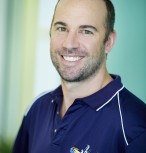DNA reveals the past and future of coral reefs
New DNA techniques are being used to understand how coral reacted to the end of the last ice age in order to better predict how they will cope with current changes to the climate. James Cook Univer

From 2005 to 2022, the main node of the ARC Centre of Excellence for Coral Reef Studies was headquartered at James Cook University in Townsville, Queensland (Australia)








Abstract: Disturbances on coral reefs may cause changes in both the composition of ecological communities and topographic complexity of the reef structures themselves. The increasing frequency and severity of disturbances in recent decades has resulted in declines in both structural complexity and coral abundance and diversity, which in turn influences other coral-dependent taxa such as fishes and mobile invertebrates. Despite widespread recognition of the importance of quantifying both community composition and structural complexity for understanding the health of coral reefs, quantitative methods for assessing changes in these two key indicators remain elusive. Recent advances in underwater 3D imaging technology have facilitated new techniques for simultaneously and quantitatively assessing changes in structural complexity over multiple spatial and temporal scales. Here, I use 3D imagery collected from the Houtman Abrolhos Islands, Western Australia, to examine changes in community composition and structural complexity over a 4-year period spanning the 2011 ‘marine heatwave’ in Western Australia. The response of benthic assemblages to the bleaching event was highly variable across relatively small spatial scales (tens of metres), and shifts in community composition did not result in consistent changes in structural complexity. Understanding the relationships between community composition and structural complexity across scales will provide new understanding of the response of coral reef ecosystems to increasing frequency and severity of disturbances.
Biography: Tom is originally from Sydney and completed a B.Sc (Honours) at the University of Sydney. His honours thesis examined the influence of environmental variation on the distribution of juvenile black marlin off eastern Australia. After spending time travelling and in the diving industry, Tom moved to Townsville in 2007 to begin his PhD in the School of Earth and Environmental Science at JCU, studying mesophotic coral reefs on the GBR. His major field work comprised a 3-week expedition on board the RV Southern Surveyor, which conducted the first detailed study of the biology of the Great Barrier Reef outer-shelf. Completing his PhD in 2011, Tom has continued his research on mesophotic coral reefs at the ARC Centre of Excellence for Coral Reef Studies, JCU. He is currently a joint-postdoc between the ARC Centre of Excellence and the Australian Institute of Marine Science.
New DNA techniques are being used to understand how coral reacted to the end of the last ice age in order to better predict how they will cope with current changes to the climate. James Cook Univer
A new study on the effects of climate change in five tropical countries has found fisheries are in more trouble than agriculture, and poor people are in the most danger. Distinguished Profess
James Cook University researchers have found brightly coloured fish are becoming increasingly rare as coral declines, with the phenomenon likely to get worse in the future. Christopher Hemingson, a
Researchers working with stakeholders in the Great Barrier Reef region have come up with ideas on how groups responsible for looking after the reef can operate more effectively when the next bleaching
Abstract: As marine species adapt to climate change, their heat tolerance will likely be under strong selection. Individual variation in heat tolerance and its heritability underpin the potential fo
Abstract: The Reef Ecology Lab in KAUST’s Red Sea Research Center explores many aspects of movement ecology of marine organisms, ranging from adult migrations to intergenerational larval dispersal
Abstract: Macroalgal meadows are a prominent, yet often maligned component of the tropical seascape. Our work at Ningaloo reef in WA demonstrate that canopy forming macroalgae provide habitat for ad
Abstract: Sharks are generally perceived as strong and fearsome animals. With fossils dating back at least 420 million years, sharks are not only majestic top predators but they also outlived dinosa
Abstract: Connectivity plays a vital role in many ecosystems through its effects on fundamental ecological and evolutionary processes. Its consequences for populations and metapopulations have been
Abstract: Evolution of many eukaryotic organisms is affected by interactions with microbes. Microbial symbioses can ultimately reflect host’s diet, habitat range, and even body shape. However, how
Abstract: The past few years have seen unprecedented coral bleaching and mortality on the Great Barrier Reef (GBR) but the consequences of this on biodiversity are not yet known. This talk will expl